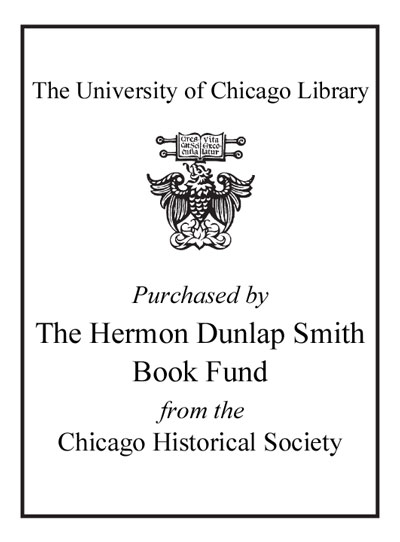Review by Choice Review
Self-taught artist Horace Pippin (1888--1946) emerged on the American art scene in the 1930s and has occupied an uneasy space in histories of American art ever since. Art historian Anne Monahan skillfully tells us how and why that came to be so. Monahan devotes chapters to biography/autobiography, labor (specifically representations of exploitative African American field labor), creative process, and "gifts," i.e., exchange relations in the contexts of agency and self-fashioning. She concludes with a meditation on Pippin's engagement with contemporary art in the 1940s. Even as she provides an exceptionally rich and compelling reading of the artist's life and work, Monahan advances a far more ambitious agenda "to destabilize an art-historical caste system" (p. 2) that takes its measure through the imposition of otherness on artists through categories of race, class, education, and art as an institutional assertion of power and distinction. This is important work and Monahan does it well, challenging the hidden baggage of art historical discourse. Thoroughly grounded in original research and the close reading of the artist's oeuvre, Horace Pippin is required reading for grasping the complex and complicated social practice of the history of art. Summing Up: Essential. Lower-division undergraduates through faculty; professionals; general readers. --Bernard L. Herman, University of North Carolina
Copyright American Library Association, used with permission.
Review by Library Journal Review
The grandson of slaves, Horace Pippin (1888--1946) was a World War I veteran lacking formal art training who began painting after age 40. "Discovered" by N.C. Wyeth in a small Pennsylvania gallery, he was included in a show of "modern primitives" at MoMA in New York and quickly became a prolific art star, "an American answer to Henri Rousseau." He pushed his brush with a right hand crippled by bullets, and said "I think my pictures out with my brain, and then I tell my heart to go ahead." His chromatically off-kilter, emotionally remote paintings are weighted with an uncanniness expressed through thick impasto. Modernist culture-vultures propelled his visibility into popular magazines. Portraits, and vaguely nostalgic plantation tableaux are mixed with brutal scenes of slaves being whipped and "John Brown Going to His Hanging"--memories just beyond reach for most mid-20th-century audiences. Art historian Monahan grapples with how to characterize this singular man, avoiding loaded vocabulary such as naïve or primitive in favor of self-taught and autodidact. It's a complex story to tell; occasional lapses into academese mar the book's readability. VERDICT This comprehensive study of Pippin absorbs previous scholarship but is perhaps the most thorough and inclusive analysis of a luminary and true original, briefly at center stage.--Douglas F. Smith, Oakland P.L.
(c) Copyright Library Journals LLC, a wholly owned subsidiary of Media Source, Inc. No redistribution permitted.
Review by Choice Review
Review by Library Journal Review

